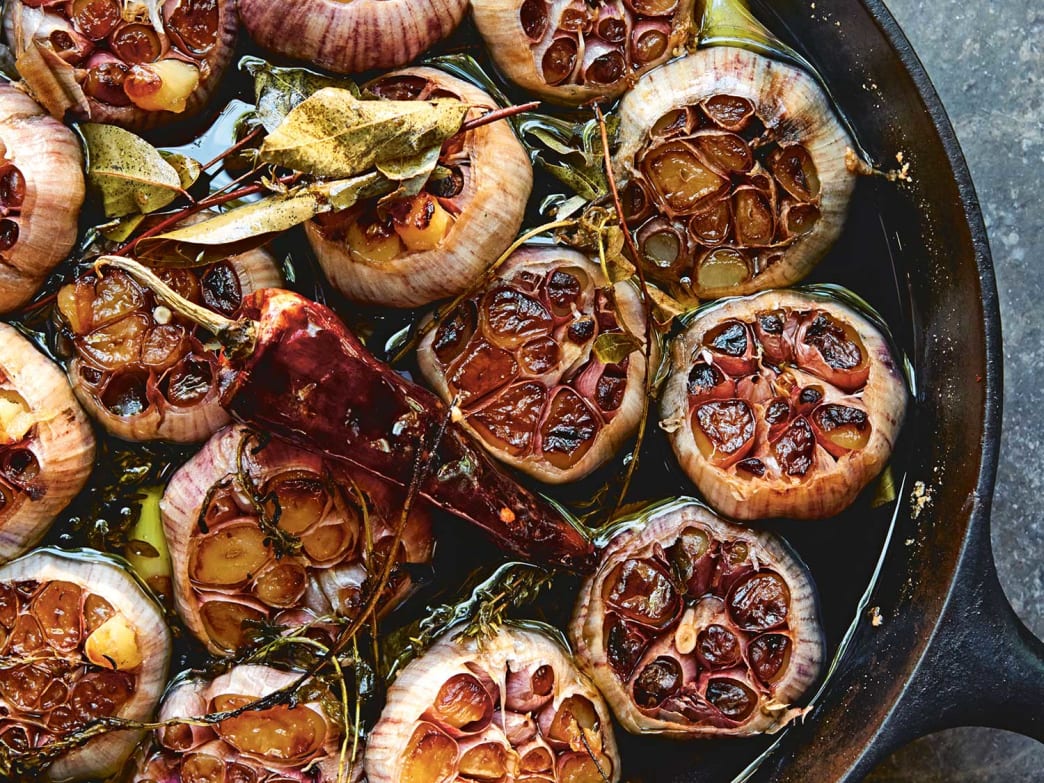
Roasting Garlic...An easy recipe
Share
Try this how-to for a two-fer of silky roasted cloves and garlicky oil.
As adding garlic to dishes goes, we definitely don’t shy away from the stuff. Whether it’s as a flavor base to a sauce like pesto or aioli, a seasoning in a roasted vegetable recipe or marinade for a piece of poultry or meat, there’s almost no use for garlic we wouldn’t get behind. We even like it as an ingredient on its own—like as a topping for pizza or focaccia

While we love garlic toasted, sauteed, or even grated raw into dishes, having homemade roasted garlic on hand is a tool that helps deepen our recipe repertoire. More subtle than raw or sauteed garlic, roasted garlic cloves have a caramelized flavor and more mellow bite that makes them well suited to simple brothy soups, white meats, egg dishes, and delicate vegetables.
What we love most about knowing how to roast garlic at home is that, unlike with the store-bought version you can sometimes find in by-the-pound olive bars or specialty grocery stores, home-roasted garlic done in a certain manner means you’re left, too, with seasoned garlic oil as well as the soft, silky cloves themselves. This roasted garlic oil, a fruity, lightly sweet, and lightly spicy condiment or cooking oil, you can basically use on anything and everything you make in your kitchen—as long as the batch lasts.

While we’ve tried multiple methods to find the best way to roast garlic (you can bake a whole head of garlic wrapped in foil, for example, or just roast the skin-on cloves whole on a baking sheet) this one is our current favorite because of the dual products it yields.
How to Roast Garlic and Make Garlic Oil
Though the technique is simple and, once you hear it, almost intuitive. You simply place whole garlic heads in a skillet, nearly cover them with oil, and let them simmer in the fat, much like confit. The method works equally well with other flavorful ingredients, like shallots, onions, or chiles, too.
Chefs and authors Eric Werner and Mya Henry write in Hartwood: Bright Wild Flavors from the Edge of the Yucatan, “[Roasted oils] are the workhorses of the kitchen. The process is simple: we pour oil into a roasting pan (at home you can use a deep sturdy pan), add chiles, garlic, or onions, and roast until the oil is flavored, then let it cool.” Though the ingredients are powerful, they add, the flavor turns out remarkably subtle. Just like that delicious oil, they write, “Those soft, flavorful cloves are another foundation of many of our dishes.”
Written by Saveur Editors for Saveur and legally licensed through the Matcha publisher network. Please direct all licensing questions to legal@getmatcha.com.
